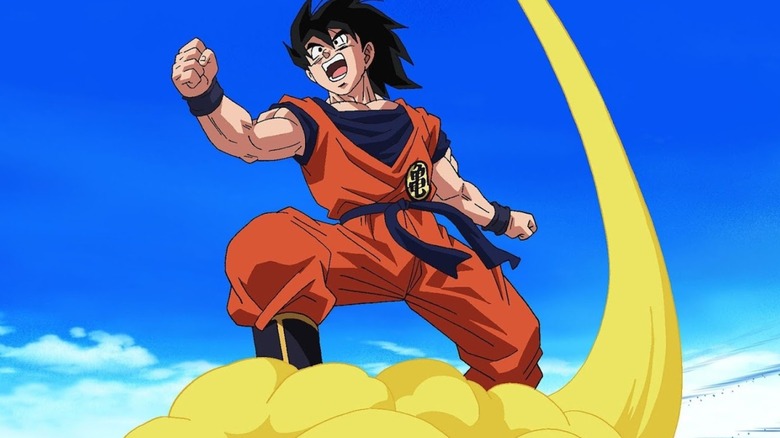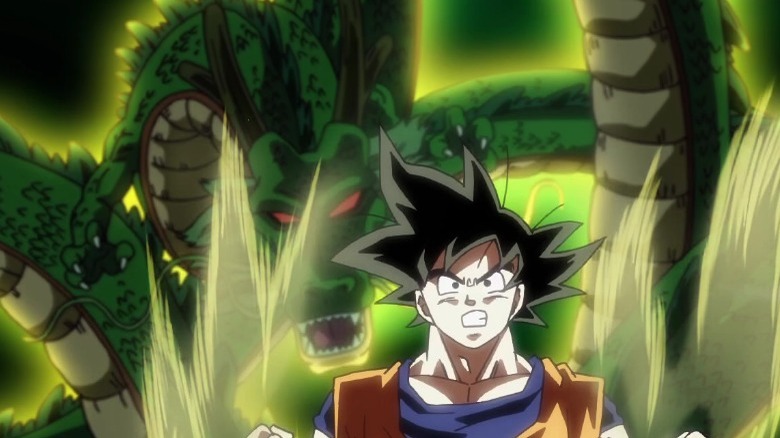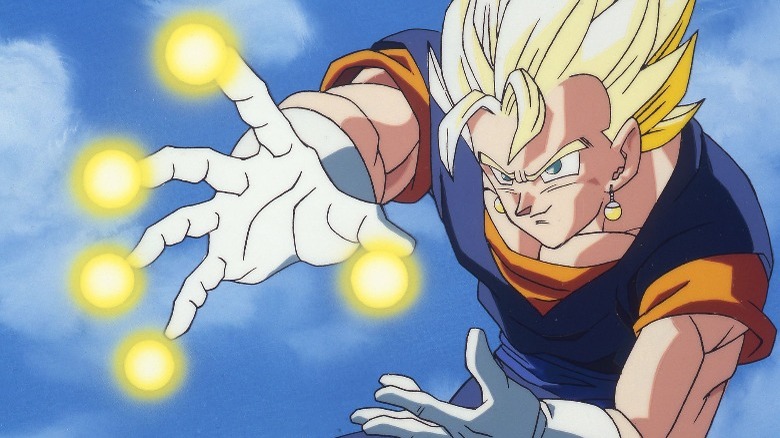Some Of Dragon Ball Kai's Animation 'Updates' Weren't Made As An Artistic Choice
The enduring legacy of the "Dragon Ball" franchise cannot be overstated. Manga artist Akira Toriyama created the franchise in 1984 and since then, "Dragon Ball" has been regarded as an ever-evolving global phenomenon. While there are innumerable entries into the franchise, "Dragon Ball Z" (DBZ), which follows an adult Son Goku in his adventures, remains endlessly popular and rewatchable.
In order to appeal to a new generation and widen the franchise further, Toei Animation produced a revised version of "DBZ" titled "Dragon Ball Kai" in 2009. The revamped series was created in commemoration of the 20th anniversary of "Dragon Ball Z" and featured remastered HD picture, sound, and special effects. The original series sketches and animation cels from "DBZ" were replaced with traced frames filled in with softer shading. Basically, "Dragon Ball Kai" mixed it up to appeal to newer audiences — while some original frames were kept intact and cropped for enhancement, other frames were completely redrawn for artistic reasons. In addition to this, the anime-exclusive storylines in "DBZ" were not included in the revamped anime series to keep the narrative more faithful to the original manga.
However, were all incorporated updates in "Dragon Ball Kai" purely artistic? According to Norihiro Hayashida, who directed the second season of the anime, this is not the case. Speaking to Anime News Network, Hayashida went into detail to explain the practical reasons behind these choices, and why the show's art style eventually strayed away from its established format.
Why Dragon Ball Kai's art style is so discordant
The nature of updates applied to "Dragon Ball Kai" was multifaceted. First, the visible damage to the original anime series' frames was reduced with the aid of selective cropping. After the frames were cropped, the aired episodes would vary in aspect ratio based on the device used and the country it was released in. For instance, the first 98 episodes of "Dragon Ball Kai" were available in 4:3 on home video in selected countries, although the standard ratio for finished episodes was 16:9.
While all of these changes contributed to the popularity of "Dragon Ball Kai," fans could not help but notice discrepancies in art/animation styles as the series progressed. Although seasons 1 to 4 predominantly featured redrawn material, the remaining seasons only featured upscaled versions of the "DBZ" anime. In the interview linked above, Hayashida explains that this was done because a certain animation technique was banned by the government at the time (the interview was published in 2016):
"Ten years ago, the Japanese government banned some ways that animation was being produced, because they could be harmful on the eyes. There was a technique based on alternating black and white color values to add movement to still images that is no longer allowed..So what the animators would do is take the original footage and redo any sequences which could not be used because of this situation."
To explain Hayashida's statement, the redrawn technique was a result of the animation style ban, but after it was lifted, those who worked on the later seasons resorted to "a combination of digital and cel animation." While the original cel animation from "DBZ" was used, the frames were digitally enhanced without any of the hand-redraw techniques that were employed throughout seasons 1 to 4.
Does this discrepancy hamper the DBK experience?
In the same interview, Hayashida emphasizes that he prefers the second season of the series as "it preserves the original show" better, citing the contrast between digital and manual animation techniques as jarring. However, are the subtle discrepancies between the first and second halves of "Dragon Ball Kai" jarring enough to hamper the viewing experience? The short answer, in my opinion, is no. While the re-drawn episodes right up to "Cell Games Saga" are a faithful, yet modern restoration of the original series, the digitally enhanced episodes also helped improve the viewing experiencing in its own way.
Per Kanzenshuu, which details the digital remastering process of "Dragon Ball Kai," the later episodes underwent extensive color correction, damage restoration, and dust/grain removal with the aid of automated programs. This helped retain the art style of "DBZ," and enhanced the picture/sound quality of every frame. While the color palette of the original anime looks a tad faded, the restoration upgrades the tones to make them appear crisper and more vibrant. These differences can be easily spotted if one compares the tones of Goku's outfit and hair in the two versions, along with the sound effects used in the revamped version. The SFX used in "Dragon Ball Kai" enhances the quality of the fight sequences, making them much more enjoyable from an aesthetic point of view.
Hardcore "Dragon Ball" fans might argue that "Dragon Ball Z" is a more nostalgic watch, and the series' faded, unpolished look adds to its enduring charm. While I completely agree with this, those in favor of a cleaner, digitally enhanced viewing experience and a tighter storyline should watch "Dragon Ball Kai." No matter what choice one makes, the "Dragon Ball" franchise reigns supreme.


